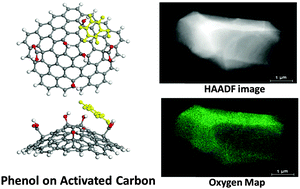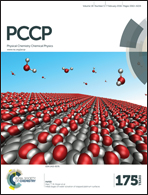Probing the interactions of phenol with oxygenated functional groups on curved fullerene-like sheets in activated carbon†
Abstract
The mechanism(s) of interactions of phenol with oxygenated functional groups (OH, COO and COOH) in nanopores of activated carbon (AC) is a contentious issue among researchers. This mechanism is of particular interest because a better understanding of the role of such groups in nanopores would essentially translate to advances in AC production and use, especially in regard to the treatment of organic-based wastewaters. We therefore attempt to shed more light on the subject by employing density functional theory (DFT) calculations in which fullerene-like models integrating convex or concave structure, which simulate the eclectic porous structures on AC surface, are adopted. TEM analysis, EDS mapping and Boehm titration are also conducted on actual phenol-adsorbed AC. Our results suggest the widely-reported phenomenon of decreased phenol uptake on AC due to increased concentration of oxygenated functional groups is possibly attributed to the increased presence of the latter on the convex side of the curved carbon sheets. Such a system effectively inhibits phenol from getting direct contact with the carbon sheet, thus constraining any available π–π interaction, while the effect of groups acting on the concave part of the curved sheet does not impart the same detriment.



 Please wait while we load your content...
Please wait while we load your content...